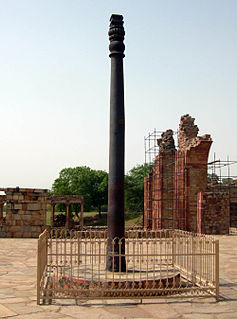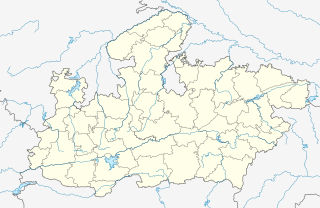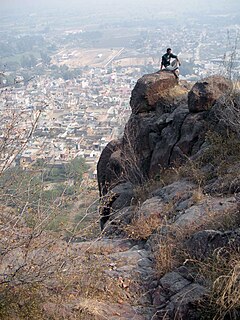 W
WThe Allahabad pillar is a Stambha, containing one of the Pillars edicts of Ashoka, possibly erected by Ashoka, Emperor of the Maurya dynasty, who reigned in the 3rd century BCE or it may have prior origins. While it is one of the few extant pillars that carry Ashokan edicts, it is particularly notable for containing later inscriptions attributed to the Gupta emperor Samudragupta. Also engraved on the stone are inscriptions by the Mughal emperor Jahangir, from the 17th century.
 W
WThe Bodh Gayā inscription of Mahānāman is an epigraphic record documenting the construction of a temple by the Sri Lankan monk Mahānāman at Bodh Gaya in the late sixth century.
 W
WThe Dhaneswar Khera Buddha image inscription is an epigraphic record on the base of a bronze image of the Buddha recording its dedication by the wife of Harirāja of the Gupta lineage. The inscription provides an important documentation on the local Gupta dynasty and has been dated to the early 5th Century AD.
 W
WThe Eran boar inscription of Toramana, is a stone inscription found in Eran in the Malwa region of Madhya Pradesh, India. It is 8 lines of Sanskrit, first three of which are in meter and rest in prose, written in a North Indian script. It is carved on the neck of a freestanding 11 feet (3.4 m) high red sandstone Varaha statue, a zoomorphic iconography of Vishnu avatar, and dated to the 6th century. The inscription names king Toramana, ruler of the Alchon Huns, as ruling over Malwa and records that a Dhanyavishnu is dedicating a stone temple to Narayana (Vishnu).
 W
WThe Gangadhar Stone Inscription of Viśvavarman is an epigraphic record documenting the construction of a temple at Gangadhar town in the fifth century during the reign of the Aulikara king Viśvavarman.
 W
WThe Gwalior Inscription of Mihirakula is a Sanskrit inscription recording the construction of a Surya temple from stone, by Matricheta. It was found in 1861 by Alexander Cunningham and published in 1861. Several translations of it have been published thereafter. It is damaged, its script is the northern class of ancient Gupta script and the entire composition is in poetic verse.
 W
WThe Hāsalpur inscription of Nāgavarman is an epigraphic record on a memorial stone documenting the exploits of a ruler named Nāgavarman. It is not dated but has been assigned to the mid-sixth century CE.
 W
WThe iron pillar of Delhi is a structure 23 feet 8 inches high with 16 inches diameter that was constructed by Chandragupta II, and now stands in the Qutb complex at Mehrauli in Delhi, India. It is famous for the rust-resistant composition of the metals used in its construction. The pillar weighs over six tonnes and is thought to have been erected elsewhere, perhaps outside the Udayagiri Caves, and moved to its present location early in the Delhi Sultanate.
 W
WThe iron pillar of Delhi is a structure 23 feet 8 inches high with 16 inches diameter that was constructed by Chandragupta II, and now stands in the Qutb complex at Mehrauli in Delhi, India. It is famous for the rust-resistant composition of the metals used in its construction. The pillar weighs over six tonnes and is thought to have been erected elsewhere, perhaps outside the Udayagiri Caves, and moved to its present location early in the Delhi Sultanate.
 W
WThe Katni copper-plate of Jayanātha is an epigraphic record documenting the donation of the village of Kalabhikuṇḍaka in the time of the Uccakalpa ruler mahārāja Jayanātha. It is dated year 182 in the Gupta era.
 W
WThe Mandasor Pillar Inscriptions of Yashodharman are a set of Sanskrit inscriptions from early 6th-century discovered at an archaeological site at the village of Sondani (सोंधनी), about 4 kilometers south of Mandsaur (Mandasor) in northwestern Madhya Pradesh, India. These record the victory of Aulikara king Yasodharman over the Hun king Mihirakula. According to Richard Salomon, these are notable for "their outstanding literary, calligraphic and historical value". The inscription adds to the evidence in Buddhist texts, such as the memoirs of the Chinese pilgrim Xuanzang who calls Mihirakula as extremely cruel and barbaric, one who killed monks and destroyed monasteries in Gandhara. The Mandasor inscription praises Yasodharman, describes him as having rescued the earth from "rude and cruel kings of the Kali age, who delight in viciousness".
 W
WThe Mandsaur stone inscription of Yashodharman-Vishnuvardhana, is a Sanskrit inscription in the Gupta script dated to about 532 CE, on a slate stone measuring about 2 feet broad, 1.5 feet high and 2.5 inches thick found in the Malwa region of India, now a large part of the southwestern Madhya Pradesh. On the back are engraved a sign of sun and moon, as well as two horsemen. The inscription opens with the sign for siddham, is entirely in verse of various meters, and is signed at the end with the name of the engraver. The script says Fleet belongs to the "northern class of alphabet", and opens with invocations to Hindu god Shiva.
 W
WThe Naderī satī stone inscription is an epigraphic record documenting the self-immolation of a woman after the death of her husband. It has been assigned to the fifth or sixth century CE.
 W
WThe Rīsthal inscription is a stone-slab inscription which was discovered in 1983 in the area of Rīsthal near Mandsaur in Madhya Pradesh, India.
 W
WThe Sanchi inscription of Chandragupta II is an epigraphic record documenting a donation to the Buddhist establishment at Sanchi in the reign of king Chandragupta II. It is dated year 93 in the Gupta era.
 W
WThe Sanjeli inscriptions consist in three copperplate charters found in Sanjeli in northern Gujarat. The copperplates mention the rule of Alchon Huns king Toramana in the area.
 W
WThe Tosham rock inscription, dating from the 4th or 5th century, on Tosham hill in Tosham town of Haryana state in India, is an epigraph documenting the establishment of a monastery and the building of water tanks for followers of the Satvata during the time of late Gupta Empire.
 W
WThe Tumain inscription of Kumāragupta is an epigraphic record documenting the construction of a temple in the time of the Gupta king Kumaragupta I. It is dated year 116 in the Gupta era.
 W
WVishnuvardhana was a king of the Varika tribe in Malwa, and probably a feudatory of Gupta Emperor Samudragupta. He is known from an inscription on a sacrificial pillar, the Bijayagadh inscription. The inscription is dated 428 of an uncertain era, which, based on epigraphical evidence, is thought to be Vikram Samvat, corresponding to be 371-372 CE.